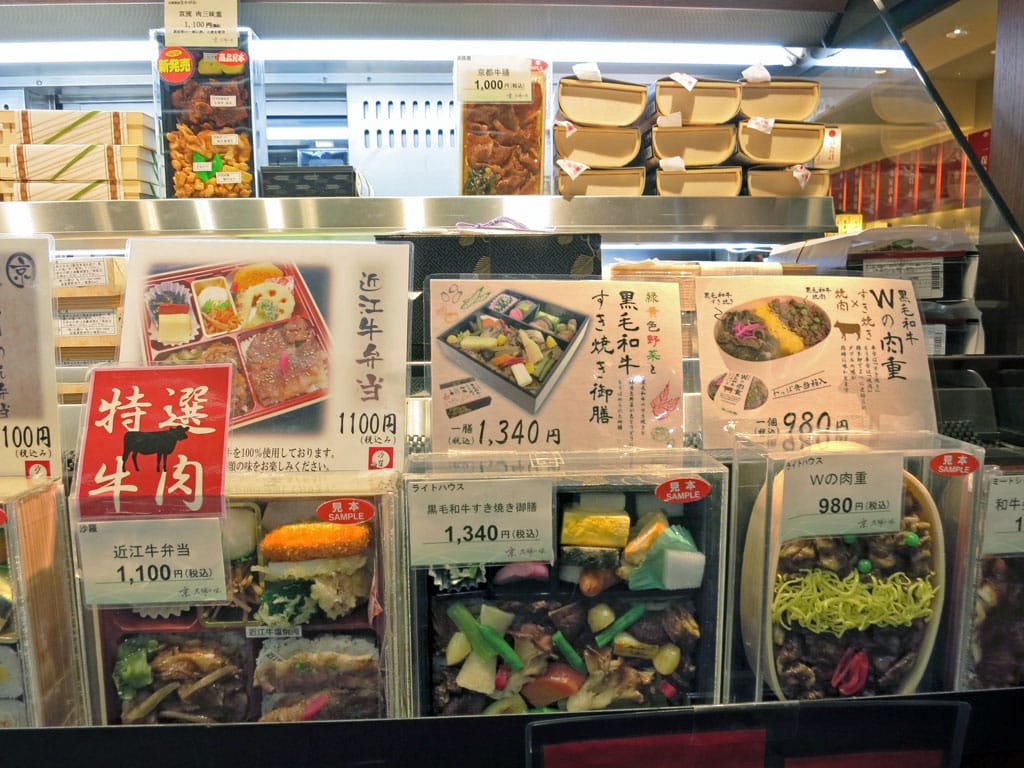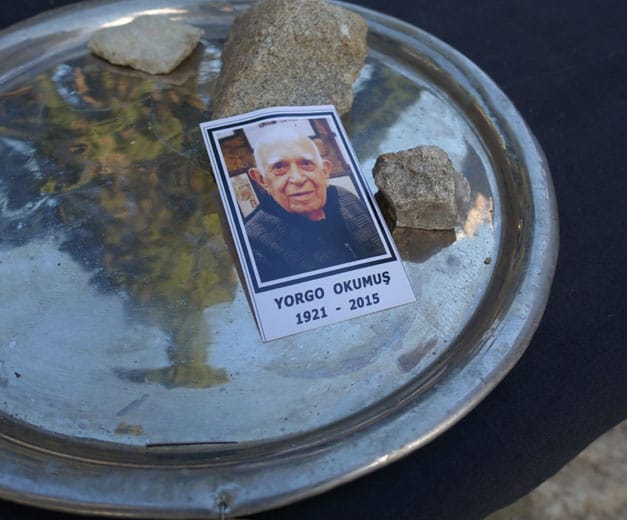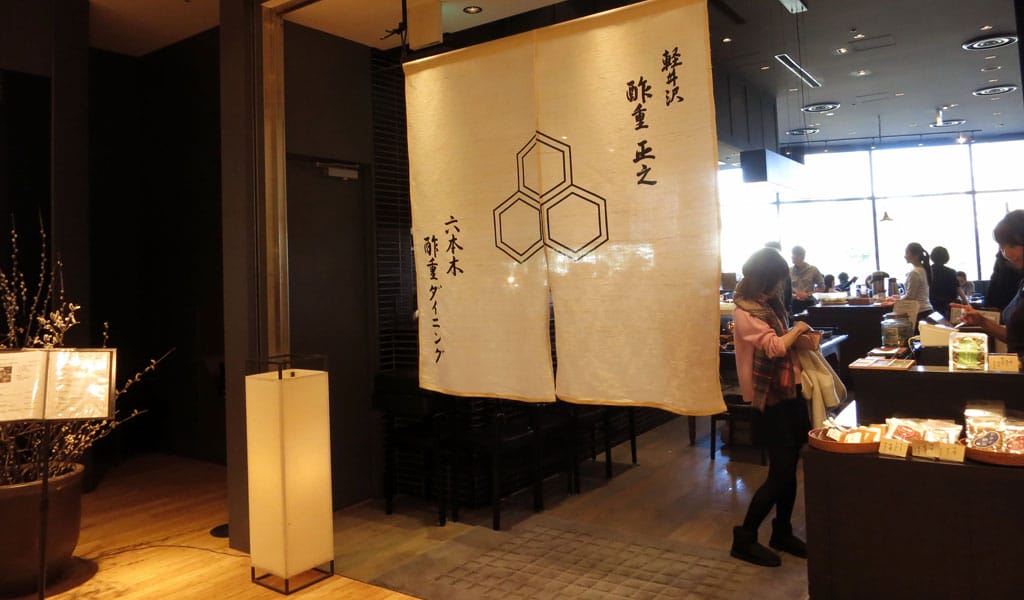Any journey on the Shinkansen – Japan’s bullet train – is the perfect opportunity to enjoy an ekiben, the iconic bento filled with an assortment of delicacies tucked into a container and eaten in bite-size pieces.
The term comes from the Japanese words for station (eki) combined with ben for bento (or “lunchbox”). These little jewel boxes are sold at concessions in train stations across the country and occasionally via pushcarts on trains. Different regions of Japan offer up varieties of local ingredients or specialties, making the ekiben a cornucopia of Japanese cuisine.
Before airplanes became inexpensive and frequent in Japan, rail travel was the only mass transportation for long distances. It still is for most people in places without airports. Train trips can be lengthy, and passengers need meals for the voyage, so the tradition of purchasing an ekiben at the station has become part of the journey. These meals are not the typical bland fare of modern air travel. The makers take pride in the diversity and quality of the ingredients, and the competition between makers keeps the choices diverse and exciting. There are even ekiben malls and stores offering their goods to the non-traveler.
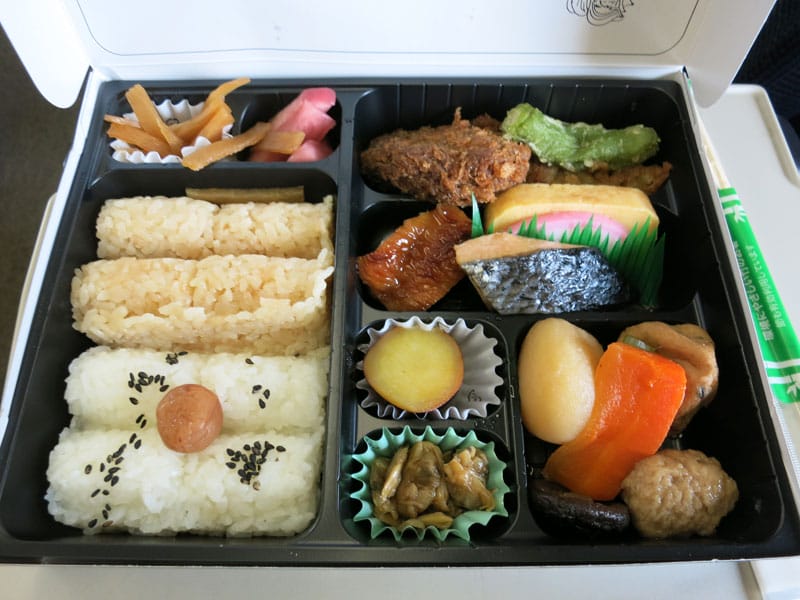
On a recent round trip from Tokyo to Kyoto, where there is no airport, we began with an early morning sprint through Tokyo station to procure the first of the various ekiben we would consume on our journey. The space just past the ticket wicket contained a wide assortment of culinary temptations, from sushi to beef. Up on the departure platforms there were more stalls. The majority of sellers display plastic models of the bento boxes showing the exact contents to potential clients. Others have photos. The boxes were originally made of wood, but recently plastic and Styrofoam (sometimes with a fake wood grain) have become ubiquitous. Costs range from a bit above US$5 up to around $18 for prime ingredients. One need only choose, and then it’s “point and pay.”
We decided to go old school with a classy Makunouchi bento. Makuno-uchi means “between the acts,” and this type of bento dates back to the Edo period (early 1600s to mid-1800s), when people brought bento to eat between acts at Kabuki (Japanese opera) performances. A proper Makunouchi bento must have a combination of fish, meat, eggs and vegetables. Ours came loaded with a chunk of karage (fried chicken), broiled salmon, a wedge of shimmery egg custard, preserved clams, a ball of diced fish, sliced kamaboko (fish cake), yam, fried tofu, sparkling assorted vegetables, a variety of Japanese pickles and two kinds of rice wrapped in a box with a Kabuki character on the front and a proud explanation of the history of Makunouchi bento in Japanese.
We also snagged a Fukagawa Meishi bento packed with clams simmered in miso, pieces of anago (freshwater eel) and ayu (sweetfish) poached in a sweet sauce, all swimming over a bed of rice with an assortment of pickles tucked off to the side. A traditional Fukagawa bento contains clams, which in Edo times were plentiful in the Sumidagawa River that flowed through the Asakusa Fukagawa area of Tokyo. The river is too polluted for fish to be edible now, but the tradition has stayed alive.
Some passengers dive right into their bento after settling into their Shinkansen seats, while others spend time anticipating the long trip and the delicious distraction of lovely food. We decided to wait for the train to snake through the Yurakucho area of Tokyo toward Kyoto and Osaka. When the scenery turned green, we pulled out our treasures, unwrapped them, extracted the chopsticks nestled inside and began our feast. A quick trip to the refreshment car for hot tea completed the meal.
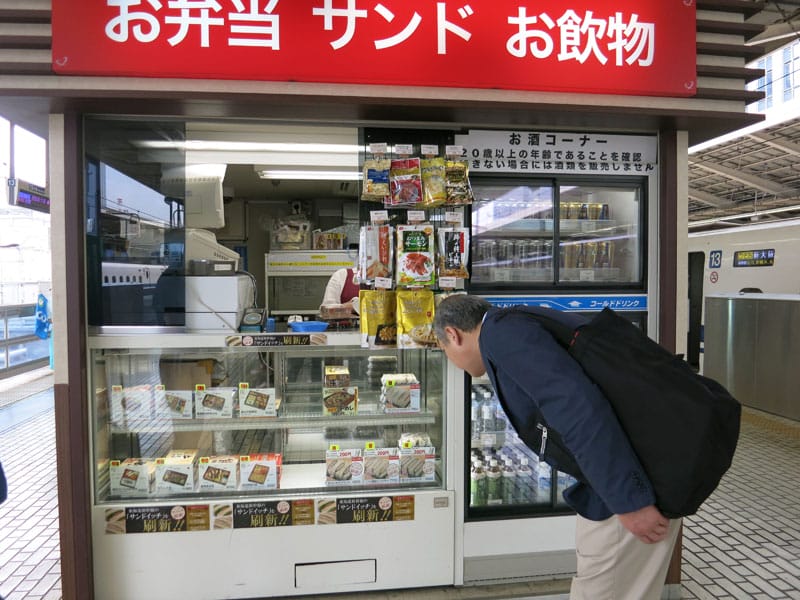
On our return to Tokyo we hit Kyoto station in the late afternoon. The Kyoto ekiben food court was filled with exciting choices, and we were first tempted by katsu sando, a breaded and deep-fried pork cutlet called tonkatsu tucked neatly into a sliced white-bread sandwich. Remembering our typical, quite large Kyoto tempura lunch, we perused the sushi selections to find something a bit lighter.
Two ekiben hit the mark: a gorgeously wrapped “wooden” box with Bara-zushi, a local specialty, tucked inside. Bara is the Kansai area version of chirashi-zushi, mixed ingredients over sushi rice. Unlike the similar Tokyo/Kanto-area chirashi, it can also have ingredients mixed into the rice. The Japanese language is filled with alliterations used to describe things. In this case it’s bara-bara to describe the scattering of the ingredients over the rice. Our bento had julienned egg crêpe, succulent shitake mushrooms and diced fish cake quite artfully scattered over the sushi rice with preserved ginger shaped into a flower topping it off.
Our other bento was kaki-no-ha-sushi, a specialty of nearby Nara. Slices of cured saba (mackerel), shake (salmon) and a variety of white fish are molded over sushi rice and wrapped individually in a salted kaki (persimmon) leaf to preserve them. It’s believed that the leaves have anti-bacterial properties and kaki-no-ha-sushi is a popular sushi for travel.
Cold beer purchased on the Shinkansen was the perfect accompaniment as we plunged through the night on our way back to Tokyo. Arriving at Tokyo station we were particularly heartened to see that outside every rail car there was a huge garbage receptacle, and we joined the other passengers queuing to ceremoniously place our empty bento in the appropriate bin.
This article was originally published on September 28, 2016.
 October 29, 2015 Farewell, Yorgo
October 29, 2015 Farewell, Yorgo
On any given night, bustling, narrow Nevizade Street in the heart of Istanbul’s Beyoğlu […] Posted in Istanbul September 10, 2018 Farewell, Nunu
September 10, 2018 Farewell, Nunu
We are so heartbroken to report the passing of Nunu Gachechiladze, fondly known as our […] Posted in Tbilisi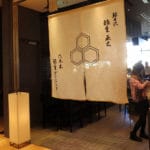 June 14, 2021 Suju Dining Rokkaku
June 14, 2021 Suju Dining Rokkaku
Many people think of miso as the soup that gets tacked onto every Japanese meal. We can […] Posted in Tokyo
Published on October 11, 2022
Related stories
October 29, 2015
IstanbulOn any given night, bustling, narrow Nevizade Street in the heart of Istanbul’s Beyoğlu district buzzes with thick crowds of evening revelers searching for the best table while clean-shaven waiters in their customary uniform of pressed white shirts and V-neck sweaters attempt to lure the crowds into their establishments. Hyperactive as it may be, Nevizade…
September 10, 2018
TbilisiWe are so heartbroken to report the passing of Nunu Gachechiladze, fondly known as our “Pickle Queen” at Tbilisi’s Deserter’s Bazaar. We first met Nunu two years ago, while mapping out our market walk with Justyna Mielnikiewicz. In our decade and a half of life together in Georgia, Justyna, a Polish native and pickle expert…
June 14, 2021
TokyoMany people think of miso as the soup that gets tacked onto every Japanese meal. We can still remember our first experience of Japanese food in the West, when the waiter brought the soup at the end of the meal, and someone thought he’d forgotten to serve it at the beginning. Any self-respecting Japanese meal,…







































